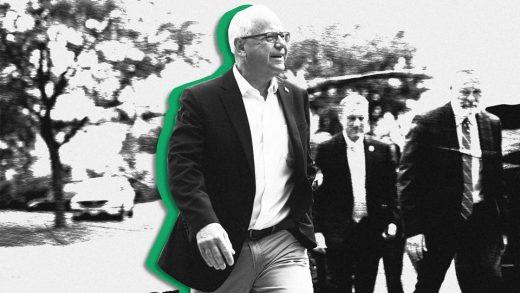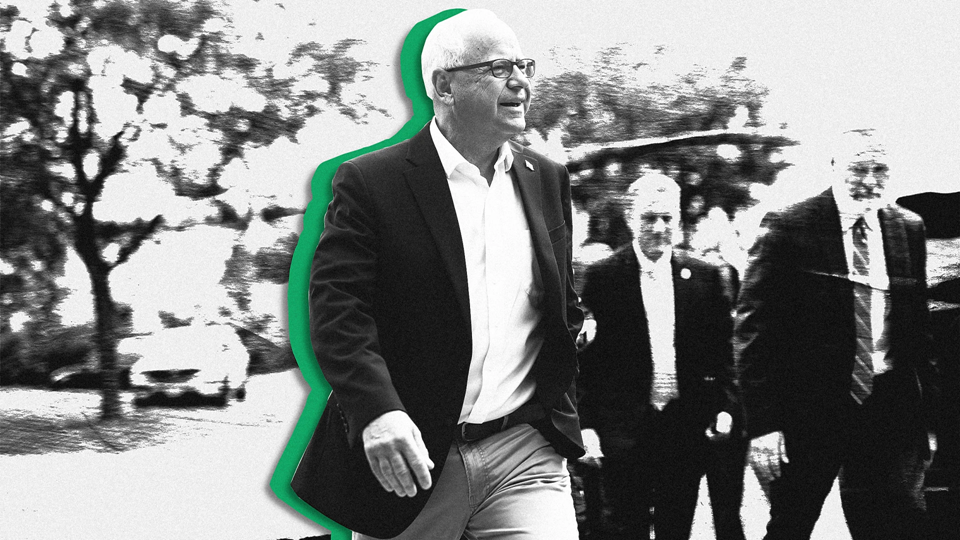What has Tim Walz done for the climate as Minnesota governor?
What has Tim Walz done for the climate as Minnesota governor?
The new vice presidential nominee has put together a solid climate record—as he is known as a skilled communicator about climate change.
Kamala Harris just announced her vice presidential running mate as Tim Walz, the current governor of Minnesota who has a track record of climate action—and “skillful” climate communication.
Tim Walz became a national talking point recently in part because of his communication skills: he’s the one who set off the trend of calling Republicans “weird.” And when it comes to talking about climate change, he’s one of the country’s “most skillful” such communicators, according to a recent Time piece by a reporter who has moderated a climate discussion with Walz.
“He described climate policy as a political economy problem as much as he did a strictly scientific or economic one,” reporter Justin Worland wrote, noting that it’s not enough that climate policies come with societal benefits—politicians also have to communicate that, and prove it. “The surest way to get people to buy in is to create a job that pays well in their community,” Walz told Worland.
Walz was first elected governor of Minnesota in 2018, and in 2019, he signed an executive order creating a climate change subcabinet “to rally the resources of state government” around climate action. “Climate change threatens the very things that make [Minnesota] a great place to live,” he said at the time. That subcabinet includes members from the state’s departments of commerce, labor, health, transportation, housing finance, and more.
In 2022, Walz rolled out Minnesota’s Climate Action Framework, a 69-page climate plan with six major goals: clean transportation; climate-smart natural and working lands; resilient communities; clean energy and efficiency buildings; healthy lives and communities; and a clean economy.
Specifics of the plan included aims to increase the share of electric vehicles on Minnesota roads to 20% by 2030 (the share was 1% at the time the plan was announced), and to reach net-zero carbon emissions by 2050. In 2023, Walz announced a new climate goal: to reach 100% clean energy by 2040. With that goal, Walz signed a bill that would create new clean energy jobs and require utilities to reach certain clean energy standards.
Reaching 100% clean energy can be a challenge for any state, because clean energy projects can often get snagged by drawn-out permitting processes. Even with incentives, that red tape can slow the effort to build new energy infrastructure. Initially, Minnesota wasn’t on pace to reach its goal, but Walz found a solution: in 2024, he passed the bipartisan Minnesota Energy Infrastructure Permitting Act to reform, and streamline, the permitting process for clean energy projects. That act is expected to cut permitting time by nine months to a year, per Utility Dive—shortening the total approval timeline by 50% or more.
Walz has courted some climate controversy, though. In June 2024, 16 environmental groups criticized Walz for what they called “polluter capture,” saying that industry and agriculture held too much power with those that regulate them. Those environmental groups created a website citing instances when Walz’s administration was too lenient in its regulations around issues like air quality concerns, nitrate pollution from farms, and the approval of a new crude oil pipeline in the state.
“Gov. Walz didn’t create this problem,” one environmentalist told the MinnPost, “but he needs to fix it. Instead, it is getting worse on his watch.” The Walz administration has countered that the state has “a strong record of holding polluters accountable and working with the community and the Legislature to ensure health and our natural resources are protected.”
As Governor, he’s taken other climate actions during his tenure, too, including funding public transit and EV infrastructure projects, and allocating $2 billion to natural resources, climate, and energy projects through a bill that has been likened to the Inflation Reduction Act. That bill, signed in 2023, gave incentives for schools to install solar power; rebates for heat pumps and electric stoves; and rebates for the purchase of EVs and electric school buses.
ABOUT THE AUTHOR
(8)



